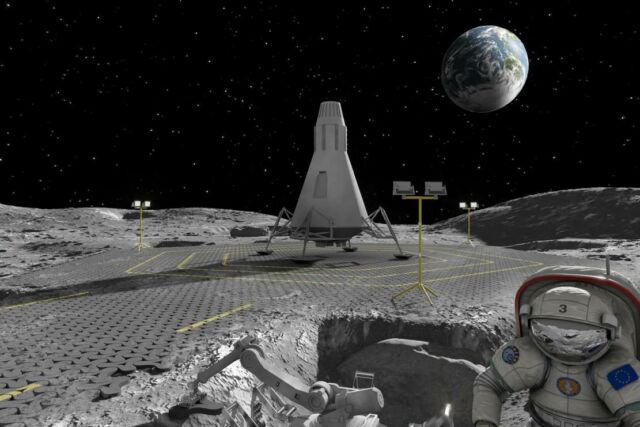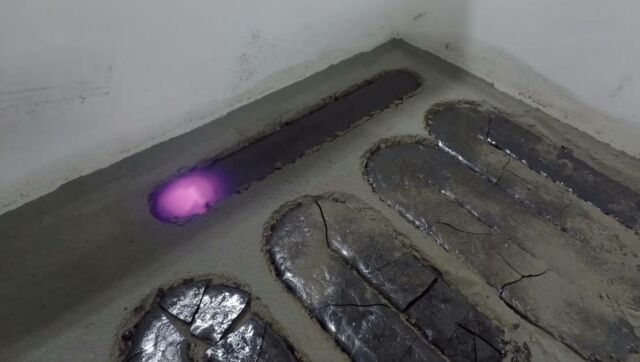
Making roads on the Moon. The idea of melting sand to make roadways was first proposed for Earth, back in 1933.
An ESA project tested the creation of roadworthy surfaces and landing pads, by melting simulated moondust with a powerful laser.
When astronauts return to the lunar surface they are probably going to be doing more driving than walking – but to keep billowing moondust at bay they are going to need roads.
With civilization comes roads, and that is going to be especially true on the Moon, just to keep the dust away. Lunar dust is ultra-fine, abrasive, and clingy. In the Apollo era dust clogged equipment and eroded spacesuits.

One small step on the way to lunar roads. ESA
ESA’s PAVER
Paving the road for large area sintering of regolith – project investigated the feasibility of this same approach for lunar roadmaking, led by Germany’s BAM Institute of Materials Research and Testing with Aalen University in Germany, LIQUIFER Systems Group in Austria and Germany’s Clausthal University of Technology, with support from the Institute of Materials Physics in Space of the German Aerospace Center, DLR.
The PAVER consortium made use of a 12-kilowatt carbon dioxide laser to melt simulated moondust into a glassy solid surface, as a way of constructing paved surfaces on the face of the Moon.
Images credit ESA
source ESA





Leave A Comment